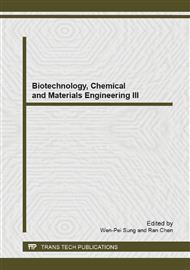p.112
p.117
p.121
p.125
p.129
p.134
p.140
p.144
p.148
Research on Treatment of the Micro-Polluted Reservoir Water with Ozone Oxidation
Abstract:
Bench and pilot scale pre-oxidation treatment runs were performed on the raw water samples from micro-polluted reservoir. Bench experimental results showed that the particles with large size decreased when ozone pre-oxidation was applied, meanwhile, the organic matters with unsaturated chemical bonds decreased obviously. Pilot experimental results showed that turbidity, UV254,CODMn and total coliform could be treated efficiently by ozone pre-oxidation combined with traditional technologies, but the effectiveness of DOC removal is not obvious. Keywords: ozone oxidation; UV254; Organic matter; micro-polluted water
Info:
Periodical:
Pages:
129-133
Citation:
Online since:
January 2014
Authors:
Keywords:
Price:
Сopyright:
© 2014 Trans Tech Publications Ltd. All Rights Reserved
Share:
Citation:


